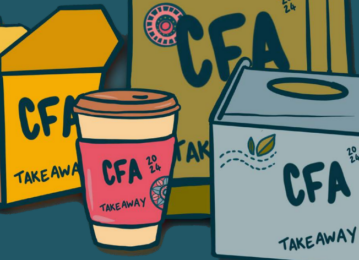Emotion is too often treated as a taboo in academic circles. Objectivity, and complete divorce from anything which could cloud one’s golden impartiality, is often idealised. It is no great surprise then that the thought of communicating one’s research with non-academics – who are bold and bright with opinions and gut feelings – strikes anxiety into the hearts of many researchers. There seems to be a fundamental source of disconnection between researchers – who wish to discuss their work as though it is an untouchable hypothetical – and most people, who inevitably respond in the context of their own feelings.
This year, the Collaborative Futures Academy was tuned into this problem. The CFA was a three day intensive course, aimed at understanding the role of emotions in engagement work. Attendees were invited to explore the themes through artistic practice, with creative methodology shaping the programme. Again this year, the Kavli Centre was a partner organisation in delivering the Academy – Richard and Catherine delivered Research and Story sections respectively. Daniela attended and benefitted from this academy last year when the theme was ‘ethics in engagement’. This year, I attended the academy, and here are three of my takeaways.
Firstly, the resident artist was a novel and worthwhile addition. Creativity is a word often thrown around in engagement circles, but the CFA weaved art throughout the three days authentically through the inclusion of artist Claire Homewood (South Africa, CareCreative) in every session. We participants were invited to draw, imagine and create with Clare in moments of reflection throughout the three days. She also captured our responses in wonderful live art – this felt like an artistic collaboration across all participants, and created a sense of community among us. It allowed us to connect not only with the themes of the academy, but each other. The addition of these artistic interludes felt very much like ‘practicing what I preach’. I often talk about using these methods to create vulnerable, thoughtful spaces for publics and researchers – but as the facilitator of those engagement events, I rarely partake. The experience will certainly help guide how I weave art into events moving forward.
Secondly, the cognition of emotion session. I began this session with some scepticism; I wasn’t sure why I would need an academic, scholarly understanding of ‘what emotion is’ to do my work. The idea felt too out of touch with what I was hoping would be a more practical academy. However, the CFA has continuously been described as a ‘toolkit’ for engagement work, and this session did provide me with a new, valuable tool. By the end of the session, I found I had a much greater understanding of how certain feelings can manifest in a person’s demeanour or on their face. For example, we were introduced to the idea that ‘anger’ can be reframed as a reaction to situations wherein we have a ‘lack of control’. As someone working in engagement work around controversial scientific advancements, it is very valuable to have an understanding of why certain emotions may be appearing in the room. I think what I learned here will help me frame my own responses and management techniques in those situations, as well as more generally in my life.
Finally, the forum theatre piece we were treated to near the end of the academy. This was used to explore how emotions can shape situations, and how we can better communicate with each other in the presence of those emotions. We were shown three scenarios, each of which began with characters very clearly failing to form any kind of understanding or connection with one another. We were invited to pause the scene at any time, and tell the actors how we think they should instead approach the situation. This experience of being able to ‘live pause’ a conversational train wreck was a very useful exercise! It made us think about what exactly we would do differently to create a connection or more meaningful conversation. It took the cognition of emotion work we had previously done out of the ivory tower and into real life. It involved thinking about the emotions of each participant more deeply than we perhaps would in our daily interactions – and thus highlighted the need to think about those emotions more explicitly in our engagement work.
Overall, I thought the academy succeeded in its goal of providing a ‘toolkit’ to attendees, and has given me a lot to think about going forward. This was the first year that the academy took a short, intensive approach and the immersion certainly paid off. I would absolutely recommend the experience to others.
The CFA actually released a ‘toolkit’ — an overview of what we did and the main takeaways from the academy. This is accessible by anyone! So if you’re interested in what we did, read more about it all here: CFA Toolkit


